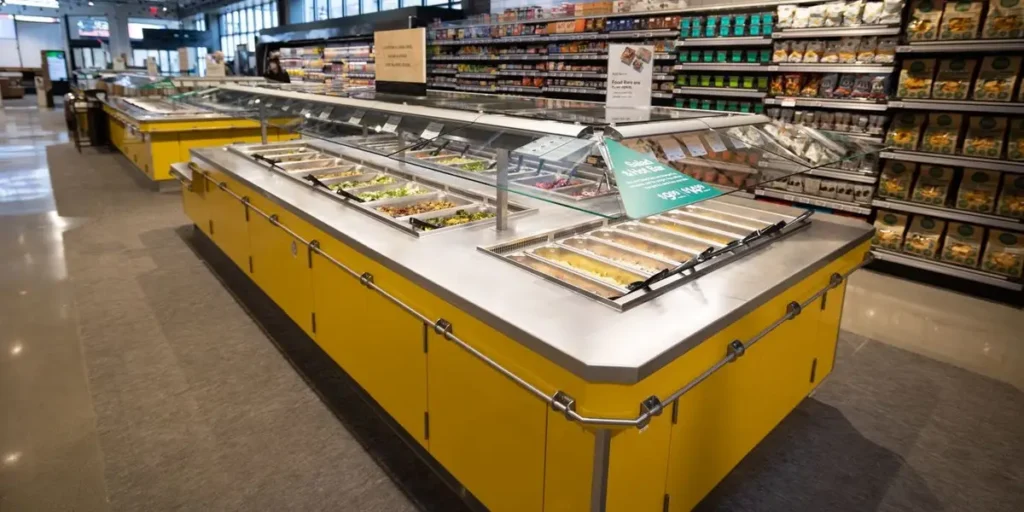A Transportation Management System (TMS) is a software solution that helps businesses efficiently plan, execute, and optimize the movement of goods. It is an essential tool for companies involved in supply chain operations, logistics, and distribution. By leveraging automation, real-time tracking, and data analytics, TMS improves transportation efficiency, reduces costs, and enhances customer satisfaction.
TMS is widely used across industries such as retail, manufacturing, e-commerce, healthcare, and logistics service providers. As businesses continue to expand and globalize, the demand for effective transportation management systems has grown significantly.
Evolution of Transportation Management Systems
The evolution of TMS has been driven by advancements in technology and changing business needs. Key milestones in the development of TMS include:
- Early 20th Century: Manual transportation planning using paper records and telephonic communication.
- 1970s-1980s: Introduction of mainframe computers for tracking shipments and inventory.
- 1990s: Development of standalone transportation software with limited integration capabilities.
- 2000s: Emergence of cloud-based TMS solutions, offering better accessibility and scalability.
- Present Day: AI-driven, IoT-enabled, and blockchain-integrated TMS solutions providing real-time visibility and predictive analytics.
Key Components of a Transportation Management System
A robust TMS consists of various modules that help businesses manage their logistics operations effectively. The core components include:
1. Route Planning and Optimization
This module helps businesses determine the most efficient transportation routes based on factors like:
- Distance and travel time
- Traffic conditions
- Fuel consumption
- Load capacity
By optimizing routes, companies can reduce costs and improve delivery times.
2. Carrier Selection and Management
TMS allows businesses to evaluate and select the best carriers based on:
- Pricing and contract terms
- Reliability and service quality
- Load capacity and transit time
- Sustainability and environmental impact
Carrier management ensures businesses work with the most efficient and cost-effective transportation providers.
3. Freight Audit and Payment
This module automates invoice processing and ensures accurate billing by:
- Verifying freight charges
- Identifying discrepancies
- Managing disputes with carriers
- Streamlining payments
By reducing manual errors, companies can save money and prevent overpayments.
4. Real-Time Shipment Tracking
TMS provides real-time visibility into shipments by leveraging:
- GPS tracking
- Internet of Things (IoT) sensors
- RFID technology
- Cloud-based platforms
Real-time tracking helps businesses monitor shipments, improve customer communication, and address potential delays proactively.
5. Order Management and Integration
TMS integrates with Enterprise Resource Planning (ERP) and Warehouse Management Systems (WMS) to:
- Manage order processing
- Coordinate inventory levels
- Automate shipping and delivery schedules
- Improve overall supply chain efficiency
6. Reporting and Analytics
Advanced analytics in TMS provides insights into:
- Transportation costs and trends
- Carrier performance
- Delivery times and delays
- Fuel consumption and sustainability
Data-driven decision-making helps businesses optimize transportation strategies and improve efficiency.
Benefits of Implementing a TMS
A well-implemented TMS provides numerous advantages for businesses, including:
1. Cost Reduction
TMS minimizes transportation expenses through:
- Route optimization
- Fuel efficiency
- Automated freight auditing
- Carrier rate comparison
2. Improved Efficiency and Productivity
Automation of key logistics processes reduces manual workloads and improves operational efficiency.
3. Enhanced Visibility and Tracking
Real-time shipment tracking allows businesses to monitor deliveries and proactively address potential delays.
4. Better Customer Service
Faster delivery times, accurate tracking, and proactive communication enhance customer satisfaction.
5. Compliance and Risk Management
TMS helps businesses comply with transportation regulations and manage risks associated with shipments.
Challenges in Implementing a TMS
Despite its benefits, implementing a TMS comes with challenges, including:
1. High Initial Costs
Investing in TMS software and infrastructure can be expensive, especially for small businesses.
2. Integration Issues
Seamless integration with existing ERP, WMS, and CRM systems can be complex and time-consuming.
3. Resistance to Change
Employees may be reluctant to adopt new technologies, requiring proper training and change management strategies.
4. Data Accuracy and Security
Ensuring accurate data input and protecting sensitive transportation data from cyber threats is crucial.
Types of Transportation Management Systems
Businesses can choose from different types of TMS solutions based on their needs:
1. On-Premise TMS
Installed on company servers, on-premise TMS offers more control but requires significant maintenance and IT support.
2. Cloud-Based TMS
Hosted in the cloud, this solution provides scalability, flexibility, and lower upfront costs. It is ideal for small and mid-sized businesses.
3. Hybrid TMS
Combining on-premise and cloud-based features, hybrid TMS solutions offer a balance between control and accessibility.
Leading TMS Providers
Several companies provide advanced TMS solutions tailored for different industries. Some of the leading TMS providers include:
- SAP Transportation Management
- Oracle Transportation Management (OTM)
- Manhattan Associates TMS
- BluJay Solutions
- JDA Software (now Blue Yonder)
- Descartes TMS
- MercuryGate TMS
Future Trends in Transportation Management Systems
The future of TMS is shaped by technological advancements and changing business requirements. Key trends include:
1. Artificial Intelligence (AI) and Machine Learning
AI-powered TMS solutions improve route optimization, demand forecasting, and risk management.
2. Blockchain Technology
Blockchain enhances transparency, security, and traceability in transportation transactions.
3. Internet of Things (IoT) Integration
IoT sensors enable real-time tracking of shipments, monitoring temperature-sensitive goods, and improving asset management.
4. Autonomous Vehicles and Drones
The use of self-driving trucks and delivery drones is expected to revolutionize the logistics industry.
5. Sustainability and Green Logistics
TMS providers are incorporating eco-friendly solutions to reduce carbon footprints and promote sustainable transportation practices.
Conclusion
A Transportation Management System (TMS) is an essential tool for businesses looking to optimize logistics operations, reduce costs, and improve customer service. By leveraging automation, real-time tracking, and data analytics, TMS enhances efficiency and ensures smooth transportation management. While challenges exist, advancements in AI, IoT, and blockchain are driving the future of TMS, making it an indispensable asset for modern supply chains. As companies continue to expand their logistics networks, investing in a robust TMS will be key to maintaining a competitive edge in the transportation industry.
















